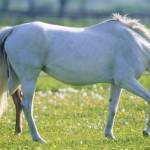Leptospirosis to Blame for Some Pregnancy Losses in Kentucky Mares

Leptospirosis, a transmissible disease of horses, other animals, and humans, is caused by infection with the spirochete Leptospira. It is known to cause late-term abortions in broodmares. According to previous studies, leptospirosis was the leading cause of abortion in domestic animals in Kentucky (mostly horses) in 1989, and the third most common bacterial cause of abortion diagnosed from 1986 through 1991. No equine vaccine for horses exists, though vaccines are available for use in cattle and swine.
For the current foaling season, the University of Kentucky Veterinary Diagnostic Laboratory confirmed 11 leptospirosis abortions through the end of January. Only 24 cases were confirmed for the entire previous year’s breeding season.
Leptospirosis in horses, cattle, and other animals is often associated with recent exposure to water that has been contaminated by rat urine. Rats and other small mammals such as mice and raccoons are often part of the barn and pasture environment where horses are kept. Cattle, horses, and dogs are all at risk for exposure to animals that can be reservoirs of leptospires. The risk is somewhat higher for horses during winter months when they are fed hay, which is almost always contaminated by mouse, raccoon, and often rat urine.
The pathogenic leptospires that cause the disease were originally classified as members of the species Leptospira interrogans. Reorganization of the genus has identified 17 named species and four genomospecies of Leptospira. More than 200 distinct leptospiral serovars are recognized, and these are arranged in 23 serogroups.
Diagnosing is difficult because culturing of leptospira may take more than three months and can easily be hampered by bacterial contamination. Another diagnostic procedure is the microscopic agglutination test (MAT), in which patient sera are reacted with live antigen suspensions of major leptospiral serovars. This procedure works only with serum rather than other tissues and it may be difficult to separate active infection from previous exposures. Other diagnostic techniques include serological assays such as ELISA, fluorescence antibody, and immunohistochemistry.








